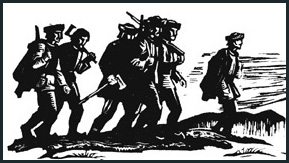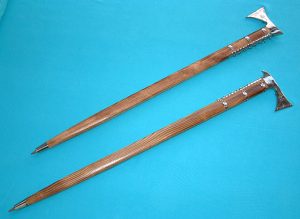But only but recently I came across some info on it, and BOY, is it interesting! I am speaking of the Polish, Ukranian, Carpathian Ciupaga, Fokos or "Her Grace Sokyra", the walking axe. I came across this blog:
with a load of interesting input.

For instance, "The skillful Woodsman manual", a treasury of woodcraft tradition in Carpathian culture. Not so technically, but rather culturally interesting.
And, a really great picture of the "Sokyra" or "Her grace Sokyra", which also played a central role in traditional "axe" dance.:

Visit the blog, it´s well worth it!
Coming to think about it, I still have a piece of metal for an axe head...;-)
Most interesting, however, is that in traditional German miner´s attire there is a so-called "Fahrstock" or "Steigerstock" (miner´s stick) with a stylized or even functional axehead as a handle, of about the same size as the Ciupaga / Sokyra / Fokos and with quite a similar function. The axeheads are even now seldom available in good quality and mostly made from brass or bronze. At this site I found this carving of a "Bergmann" in the attire of the Erzgebirge region:

The site is www.erzgebirgsschnitzer.de.
Well worth a visit in itself, but off topic for now. The so-called "Westfälischer Häckel" (Westfalian hatchet, after the region I come from) is another version even closer to the Sokyra. In the Ruhr region, there was a massive immigration of Polish people working in the mines and connected industries, and their culture had a very thorough impression on the culture. So I guess the Ciupaga in this manner found a place in the mining culture of this country.
The same might hold true for the regions "Erzgebirge" and the "Mansfeld" region.
Also, in Bavaria, Austria, Switzerland and Northern Italy, there is a morphological variant, the "Sapie" or "Griesbeil", a woodfloating or -catching hook, sometimes with a hammer. From what I heard, it was often also mounted to a walking stick, and has a close connection to the Kuk ice-axe from WWI which was in use also in early European alpinism. This tool had a pick and shovel blade and a spike to aid in climbing. Rural versions often had a hatchet and pick blade to go with the spike.
All in all, this is a fascinating topic and you have certainly not seen the last of it!;-)









